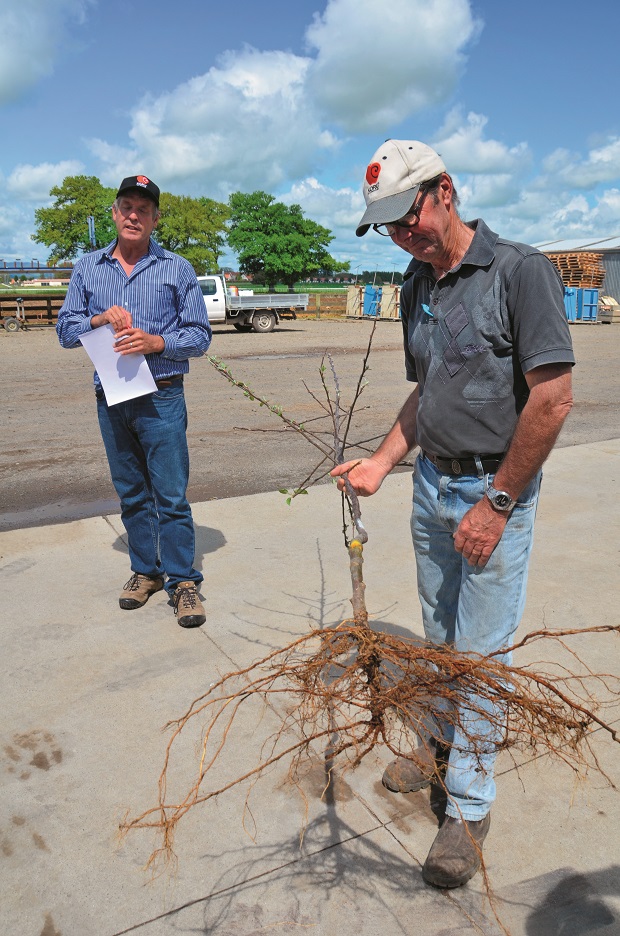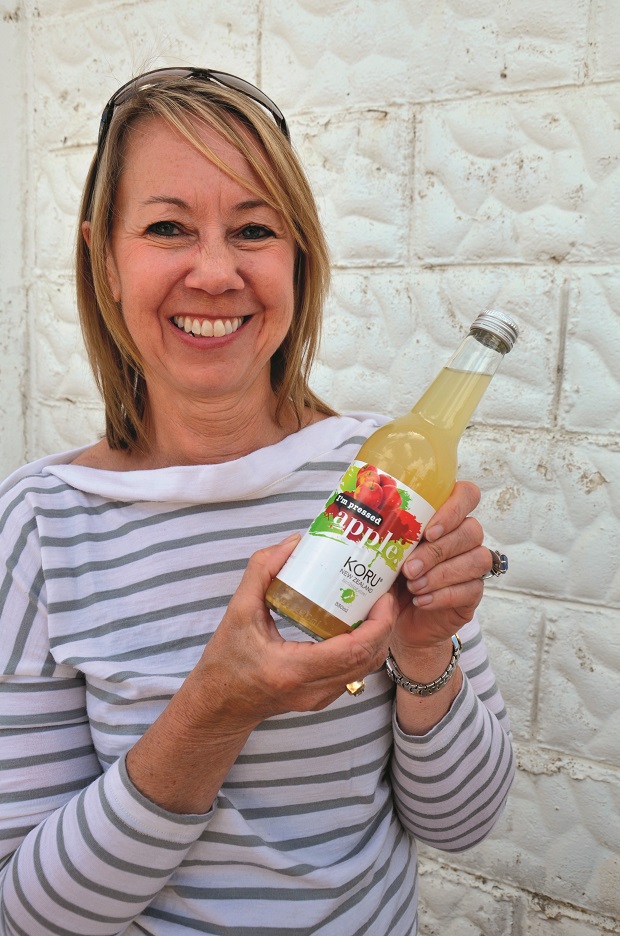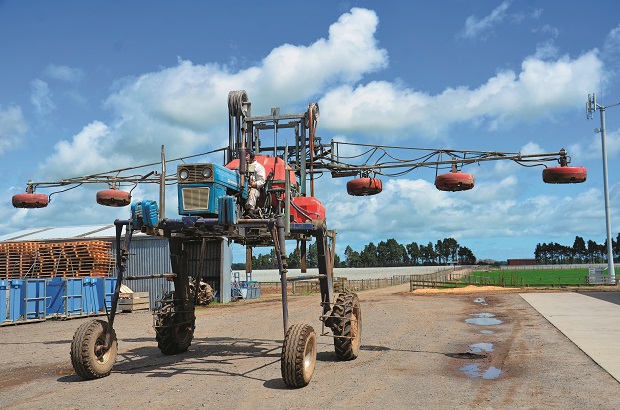Flavours come and go over a lifetime, and there are some we never forget. In New Zealand recently COL JACKSON experienced a new variety of apple, the Koru, that is a fluke of nature with outstanding credentials.
My initial reaction was “Oh yeah, just another modified apple” when a group of journalists visiting New Zealand for the annual congress of the International Federation of Agricultural Journalists descended upon an apple and cherry nursery outside Hamilton on the North Island.
There was a time when I loved apples, and my icon was the Stanthorpe Delicious. Growers’ names remain embedded in my mind, one being Dempsters of Thulimbah.
Over the following half-century, newer varieties have been introduced to meet higher productivity goals and longevity.
High land values and increases in overall farming costs also make it imperative apples be produced economically and deliver an early return on investment.
With this transition to newer varieties come tastes that perhaps appeal to less experienced palates.
Across the bright green rolling fields between Hamilton and Cambridge is McGrath Nurseries, specialist fruit tree propagators and intellectual property managers.
At latitude 36 and 150m above sea level, it experiences a very even 65 inches (165cm) of rain annually, which goes straight through the light sandy loam soil, thus there is no requirement for irrigation.
There is some frost in the surrounding hills, yet none reaches the ground.
“It may be a great area for plant propagation, but it’s not a great place to grow fruit,” says owner and managing director Andy McGrath, who founded the nursery in 1980.
The area is more noted for racehorse studs, with many famous names that have graced race tracks in Australia.
The art of grafting
Andy explains the nursery is a “bit diverse” in that it grows fruit trees to sell to growers, and the graft combined with the rootstock can control the growth and size of a tree.
The use of appropriate rootstock has greatly improved the economics of growing apples. The trees are not grown on their own roots but propagated on rootstocks that control the tree.
“The properties of the rootstock can deliver a variety of characteristics to suit the graft,” he says.
“A 15-year-old tree can be 5m or 15m, depending on the graft. Shorter trees with higher densities can have greater economies, especially at picking.”
 |
|
Trees are sold as bare root, because they leave two per cent more organic residue without removing soil
|
Understandably, orchards can be pre-planned by knowing at planting the size of trees at maturity. This, in turn, can deliver major cost savings in labour especially in pruning and picking, and time until productivity begins.
“Woolly apple aphid is the worst pest in NZ,” Andy says. “But this can be combatted by an aphid that grows under the ground. New rootstock is totally resistant to disease, including fire blight.”
He highlights the problem of removing old varieties of apple trees, and when another is planted in its place, it doesn’t do so well. But this is being eliminated through new technology, he adds.
The new technology costs money – patents and licenses protect the tops and bottoms of grafts.
“In this industry, I see a doctor twice a year and a lawyer twice a week,” he says. “There is no genetic modification in NZ; we must anticipate our needs and stay ahead of it.”
Andy says the nursery uses advanced production systems, and notes it is better to grow new varieties in NZ and export into the northern hemisphere.
“There is a very high demand for this type of rootstock,” he says.
Koru: a taste sensation
As he speaks, I sample some sliced apple of a new variety named ‘Koru’ of the Plumac variety, and the similarities with an apple I know and love – the Stanthorpe Delicious are immediately apparent. It is tasty, juicy and crunchy, with the colouring of a Bowen Special mango (also known as a Kensington Pride).
Value-adding is another important addition to the NZ apple industry, where specific varieties are being crushed into juice.
Andy’s wife, Sandi, hands out bottles of pure pressed Koru-specific sparkling juice, which is currently being trialled.
“The important factor is that it is not made from concentrate,” she says.
It is a delightfully refreshing drink with a small amount of sparkle that gives added crispness on the palate. It is an ideal adjunct to breakfast.
 |
|
Sandi McGrath shows the pure pressed koru-specific sparkling juice
|
Fluke of nature
The astounding fact about the Koru is that its breeding was a fluke of nature, otherwise known as ‘heterogenesis’ – essentially the production of offspring unlike the parents (e.g. having two different forms in the life cycle).
Koru Plumac c.v. was discovered as a chance seedling by Geoff and Marilyn Plunkett in their garden in Moutere, near Nelson, in 1998.
Geoff was a McGrath orchardist at the time, but now manages kiwifruit production for another grower.
He tells how he picked some apples from a row of Fuji variety trees, which he gave to his mother-in-law.
They went rotten before being eaten and were thrown into a rose patch – where they duly grew into a new variety.
Through curiosity, Geoff and Marilyn gave the tree a chance to produce fruit and, being experienced commercial growers, were impressed with the quality of apples it produced.
After several years of testing, the apple has moved into commercialisation and proven to be a worldwide apple.
Where most new varieties are ‘discovered’ through years of scientific breeding tests, the story of the new variety has more of a ‘down home’ and natural feeling.
The Koru’s female parent is of the Fuji variety, as defined by the discarded apples. DNA testing has indicated the other parent is Braeburn.
This result is also substantiated by the block layout from where the discarded apples were picked.
Development of the Koru so far has taken 13 years, and new varietals are protected for 20 years from date of planting. That leaves just seven years for future development.
Koru is already in NZ, Australia and the United States, is undergoing testing at 20 sites across Europe, and will be in Canada in the near future.
The trees are sold as bare root, because they leave two per cent more organic residue without removing soil.
Andy says they intend to control production to maintain a consistent supply and demand, thus ensuring the consumer pays what the apple is worth.
Then comes the crunch: “This has been designated the best apple to be developed in the past 50 years,” he says. “Its consumer qualities are very good, especially in the key aspects of storage, post-harvest quality and it is extremely productive.”
Hi-tech
As is the wont of the NZ farmer, experimentation and invention is legendary, and there is no better example than the ‘bitza sprayer’ that is vital to the entire operation.
Consisting of a 12-row boom, ceramic nozzles and hydraulic fans blasting downwards, it travels at 9km/h, releasing between 50 and 350 microns of diluted spray – from droplets to those that explode on the leaves.
 |
|
The ‘bitza sprayer’ was very carefully put together, and is vital to the entire operation. The boom folds to the back
|
“It was carefully put together, and it empties as fast as it takes to fill,” Andy says.
According to Andy, Koru arrived at a boring time in the nursery industry in NZ and suddenly things have become very exciting.
He started the nursery on about 50 hectares; it now covers 700ha.
Apart from apples, McGrath Nurseries produces 95 per cent of the cherry trees grown in NZ. They also supply apricot, nectarine, peach, pear and plum trees to every growing district across both islands.


